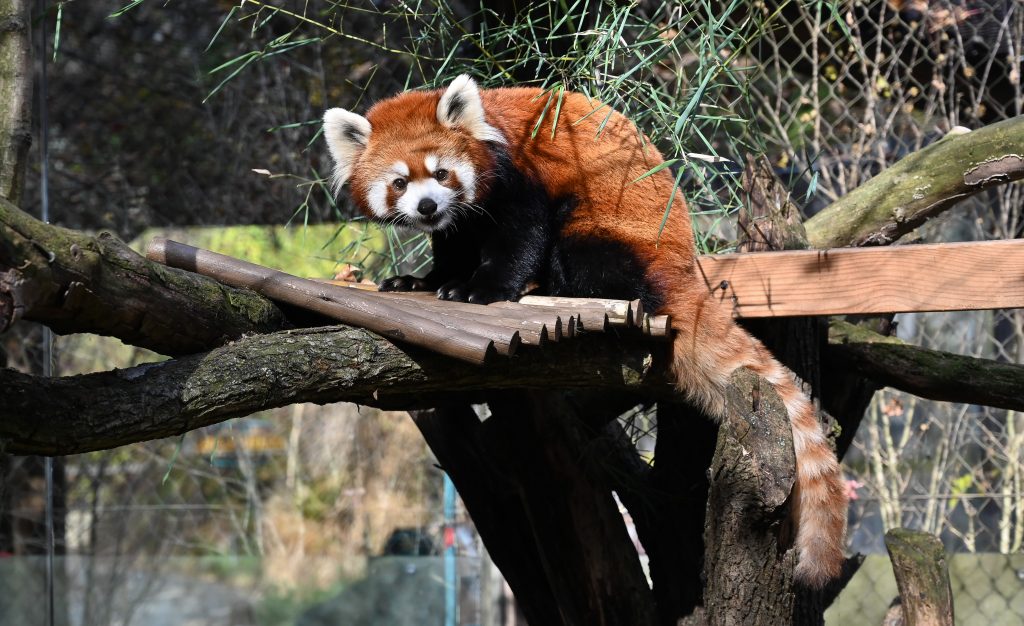New Red Panda Arrives at Pittsburgh Zoo & Aquarium

It’s a red-letter day as the Pittsburgh Zoo & Aquarium welcomes a new red panda! Marcy, a two-year-old female, arrived October 24, 2023 from the Red River Zoo in Fargo, North Dakota. Zoo visitors can now frequently see her in the Forest Passage red panda habitat toward the front of the park.
Marcy joins another female red panda, Xia, who was also born at the Red River Zoo in 2011 and has been delighting Western Pennsylvania visitors since she came to the Pittsburgh Zoo in 2012. Marcy is gradually getting accustomed to both her new habitat and fellow resident.
“The initial goal when receiving a new red panda is to acclimate the animal to the many new experiences her new home provides, from meeting and understanding her new keepers and the daily activity of the space to learning every square inch of her home; location of food, water, and bathrooms; the movement of our guests; and the new sights, sounds, smells,” says Ray Bamrick, Lead Keeper. “It is a great change to her life, and we work very hard at making these changes gradual and comforting.”
Red pandas are traditionally divided into two subspecies: the Himalayan red panda and the Chinese red panda. Like Xia, Marcy represents the Chinese lineage, and has a darker coat, redder face, and a greater color contrast between the distinctive rings on her tail.
The animals are native to very specific habitats in Asia: there must be appropriate altitude and forest cover, proximity to water, and sufficient bamboo, which comprises 95% of the red panda’s diet. They eat 20 to 30 percent of their body weight each day – equal to about two to four pounds of bamboo shoots and leaves. As humans continue to encroach, this ideal habitat is becoming increasingly rare.
While the behavior of this endangered species is difficult to observe in the wild, red pandas in zoos have offered much insight into their lives. As their numbers in the wild continue to decline, maintaining their presence in zoos is of utmost importance to learn about their biology and guard against extinction.
“The goal is to provide comfort and opportunity for each panda, to coexist peacefully, to interact with their keepers, and have a long, exceptional quality of life,” says Bamrick. “We look forward to guests getting to know her better.”
